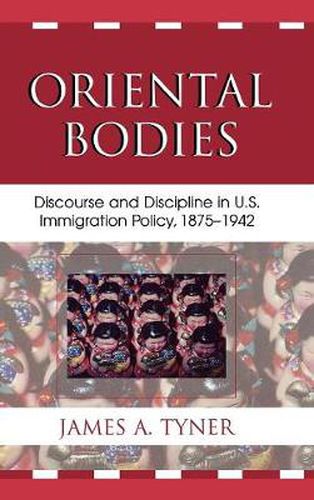Readings Newsletter
Become a Readings Member to make your shopping experience even easier.
Sign in or sign up for free!
You’re not far away from qualifying for FREE standard shipping within Australia
You’ve qualified for FREE standard shipping within Australia
The cart is loading…






Oriental Bodies charts the discursive transformations of U.S. immigration policy between 1875 and 1942. Author James Tyner concentrates on the confluence of eugenics, geopolitics, and Orientalism as these intersect in the debates surrounding the exclusion of immigrants from China, Japan, and the Philippines. This unique work argues that United States immigration policy was founded on a particular discourse of eugenics and geopolitics and that this concentration was informed by a greater Orientalist discourse. Drawing from American foreign policy, identity politics, post-structuralism, post-colonialism, and feminist theory, this fascinating study seeks to examine the construction of Oriental bodies within the emergence of U.S. immigration policy and explores how these constructions served political, social, and economic interests.
$9.00 standard shipping within Australia
FREE standard shipping within Australia for orders over $100.00
Express & International shipping calculated at checkout
Oriental Bodies charts the discursive transformations of U.S. immigration policy between 1875 and 1942. Author James Tyner concentrates on the confluence of eugenics, geopolitics, and Orientalism as these intersect in the debates surrounding the exclusion of immigrants from China, Japan, and the Philippines. This unique work argues that United States immigration policy was founded on a particular discourse of eugenics and geopolitics and that this concentration was informed by a greater Orientalist discourse. Drawing from American foreign policy, identity politics, post-structuralism, post-colonialism, and feminist theory, this fascinating study seeks to examine the construction of Oriental bodies within the emergence of U.S. immigration policy and explores how these constructions served political, social, and economic interests.